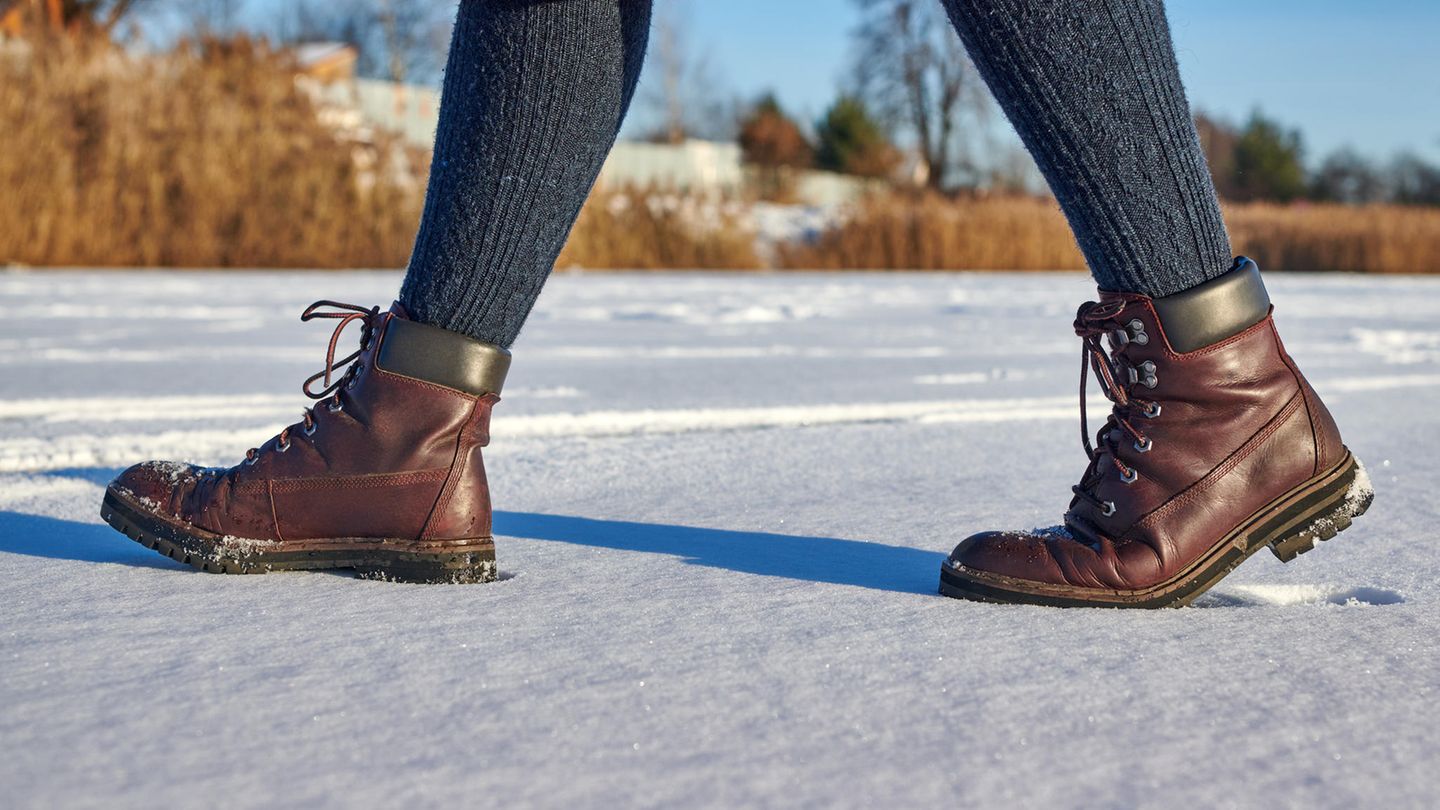Warming soles ensure that your feet stay pleasantly warm on a winter hike or on the ski slopes. The comparison clarifies which models there are and which shoes they are suitable for.
The German’s favorite phrase when it comes to bad weather is that there is no such thing – just bad clothing. The truism is of little use to those affected by chilblains if they stand at the Christmas market, looking sadly at the mulled wine and trying to cure the cold with alcohol. This may help temporarily because in small quantities it dilates the vessels and thus promotes blood circulation, but it also accelerates hypothermia because the body loses heat more quickly.
We particularly feel this in our extremities such as the fingers and feet. Both shoes protect you in the cold season, with only a few centimeters separating your feet from the frosty ground and snow. Despite thick winter or ski boots, your feet cool down quickly, usually starting with your toes. And anyone who has ever caught a cold knows how painful it is when they thaw out again.
Warming insoles: These variants are available
Warming soles for shoes are intended to prevent the feet from cooling down. The shoe in which you want to put the sole determines which sole is the right one. First of all, you should make sure that you have enough space in the shoe. If the sole is too thick and the shoe is too tight, you run the risk of disrupting the blood circulation in the foot. Sleepy toes can be the result. Winter boots usually offer enough space for a warm sole. However, they could leave pressure points in the ski boot. Once the space issue has been clarified, you need to consider whether you only want to use the insole once or multiple times.
Disposable insoles are usually slightly thinner and warm the feet through oxidation. The effect lasts around eight hours. They are particularly suitable for winter sports activities such as skiing or snowboarding because the thermal soles are flatter and it is more hygienic to change them after a day of skiing. When it comes to heat insoles that can be used several times, you can choose from electric models or soles that warm your feet using the material used (such as sheep’s wool or fleece). The electric version is usually a little thicker. Let’s take a closer look at the individual variants.
Wool thermal insoles
If you are looking for a thermal insole that can be used multiple times, this is suitable . It is made of lamb’s wool, which according to the manufacturer is not made from fur, but rather virgin wool. Beautiful: Hey Nature promises that every animal can live happily ever after. If the company sounds familiar to you, it’s because Hey Nature took part in the Vox program “The Lions’ Den”. The soles are suitable for winter or rubber boots as well as for sneakers – as long as the shoes have enough space, of course. However, you don’t want to put the insoles in a ski or snowboard boot because your feet sweat during exercise, which could bite into the wool. According to the manufacturer, the latex foam on the bottom prevents the soles from slipping.
Synthetic thermal soles
If wool is not your material of choice because you want to drape the insoles in sportier shoes, you should opt for synthetic fabrics. They are suitable for this purpose , which are explicitly aimed at hikers and skiers. They consist of a total of five layers. There is a soft, synthetic fiber on the top. There is an insulation layer underneath to protect your feet from the cold. According to the manufacturer, an underlying latex layer with activated carbon keeps bad smells away. Below this there is another cold-repellent aluminum layer. To ensure that the soles do not slip in the shoes, the manufacturer sticks a non-slip latex under them.
Disposable thermal insoles for ski and snowboard boots
Warming soles for single use are even more hygienic and thinner. They forego any protective layers and rely on a chemical reaction that generates heat. This has the disadvantage that the soles can only be used for around eight hours, but that is usually enough for a hiking tour or a day of skiing – unless the après-ski goes longer than expected. They are also thinner than reusable soles, which can be particularly advantageous in ski and running shoes because they usually fit snugly on the foot and offer less space than boots. The most popular thermal insoles of this type are: . Five pairs cost 14.90 euros, which corresponds to a unit price per pair of 2.98 euros. You have the choice between soles that you put in the shoe or those that you put under yours . Important: As soon as the soles are in the fresh air, they heat up and, according to the manufacturer, for up to eight hours.
Electric heat insoles
There are also electric heating insoles like this one . They are logically charged before use. Because there is a battery in them, the electric insoles are usually a little wider than other heated insoles. According to the manufacturer, the Bertschat model warms your feet for up to 14 hours. It offers three heat levels: low, medium and high. It can be assumed that the duration of the heating output refers to the lowest level. The stronger you set the electric heating soles, the faster they discharge. Nice: you don’t have to take off your shoes. Included is a small remote control that you can attach to your key chain. The different degrees of heat can be adjusted.
Further information are available here.
Source: Stern
I am an author and journalist who has worked in the entertainment industry for over a decade. I currently work as a news editor at a major news website, and my focus is on covering the latest trends in entertainment. I also write occasional pieces for other outlets, and have authored two books about the entertainment industry.




